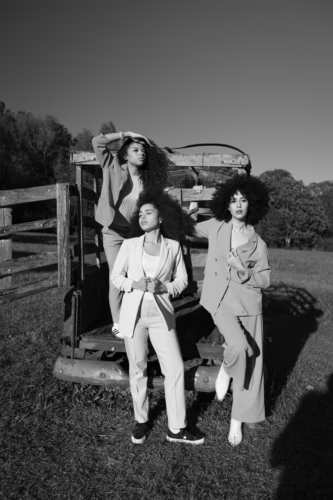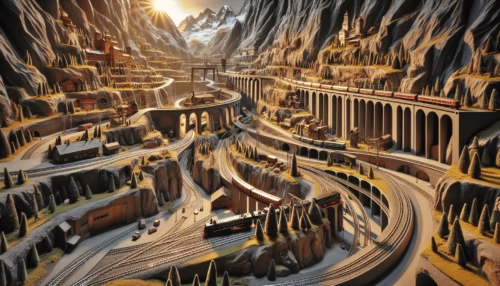What ignites the passion for model train collection and intricate layout design in enthusiasts around the world? Model train collecting often begins with a single train set, sparking an enduring fascination that transcends generations. This article meticulously explores the multifaceted world of model train collection and layout design, offering enthusiasts old and new a comprehensive guide to engage with this captivating hobby.

Table of Contents
Understanding the Historical Significance of Model Trains
Model trains have a rich history, stretching back to the 19th century when miniature trains were primarily whimsical replicas for the affluent. The evolution from simple toys to complex scale models has imbued model railroading with a compelling historical narrative. In the late 19th century, companies like Märklin in Germany and Lionel in the United States spearheaded the production of electric model trains, transforming a leisure pursuit into an intricate hobby.
The allure of model trains lies not only in their mechanical intricacy but also in their capacity to mirror historical railroads, bringing rich historical contexts into hobby rooms worldwide. Enthusiasts often recreate historical periods, encapsulating the technological advancements and cultural contexts of bygone eras within their layouts. In essence, collectors and hobbyists become custodians of railroading history, preserving its legacy through their meticulous and imaginative designs.
Essential Components of Model Train Collections
At the heart of any model train collection are the locomotives, the engines that pull the layouts to life. These can range from steam engines and diesel locomotives to modern electric trains. Selecting the right scale and gauge is pivotal. Popular scales such as HO (1:87), N (1:160), and O (1:48) define the proportional size of the model train to its real-world counterpart, while gauge refers to the track width the train runs on.
Locomotives and Rolling Stock
Understanding the types of locomotives and rolling stock enhances the authenticity of your collection. Steam locomotives are favored by hobbyists for their intricate detailing and historical significance. In contrast, modern enthusiasts might gravitate towards contemporary diesel and electric models, which offer a blend of realism and advanced functionality.
Rolling stock, which includes various types of train cars such as passenger coaches, freight cars, and cabooses, is integral to replicating authentic rail operations. Each type serves a unique purpose, contributing to the overall realism and operational potential of the layout.
Track and Scenery Components
The tracks form the backbone of any model train layout, dictating the route and operational dynamics of the model railway. With a choice between flexible and fixed track systems, enthusiasts have the creative liberty to design simple loops or intricate spiral tracks with varying elevations.
Equally crucial is the scenery, which transforms a lifeless track into a vibrant world reminiscent of the railways it seeks to emulate. This includes not only geographical features like hills and rivers but also man-made structures such as stations, bridges, tunnels, and urban landscapes. Effective use of scenery components can elevate a model train layout from a mere track setup to a realistic miniature world.

Influential Factors in Layout Design
Designing a model train layout is akin to an artist crafting a masterpiece, requiring a blend of creativity, precision, and thematic coherence. Whether depicting bustling urban metropolises or serene rural countrysides, the layout design is a form of storytelling, showcasing the dynamic interaction between trains and their environment.
Theme and Era Selection
Choosing a theme and era for your layout is a critical step that influences every subsequent decision. It can be based on a specific period, such as the Golden Age of railroading in the early 20th century, or a theme, like logging or mining railways. This selection not only determines the types of trains and scenery you will incorporate but also dictates the operational scenarios you’ll simulate.
Utilization of Space
The available space significantly impacts the complexity and scale of the layout. Detailed spatial analysis helps determine the optimal scale selection, track arrangement, and scenic elements. Whether working on a sprawling garden layout or a compact tabletop design, effective space utilization ensures an engaging and functional model railway setup.
Step-by-Step Guide to Layout Construction
Creating a model train layout is a methodical process that requires patience, planning, and precision. While the specifics may vary based on individual preferences and constraints, the fundamental steps remain consistent across all projects.
Planning and Design: Begin by sketching the layout on paper or using design software to visualize the track plan and layout dimensions. Consider the placement of key elements like stations, rail yards, and bridges.
Base Construction: Construct a sturdy foundation or baseboard that will support the entire layout. Ensure it is level and securely mounted, as this prevents derailments and structural issues.
Track Laying: Assemble and lay down the tracks according to the design plan, ensuring smooth transitions and secure connections at joints. Testing the track with a locomotive helps identify any problem areas early in the process.
Electrical Wiring: Install the necessary wiring for powering the tracks. For those opting for digital control systems, integrate Digital Command Control (DCC) circuits for enhanced train operation and complex track systems.
Scenery and Detailing: Once the technical groundwork is complete, focus on bringing the layout to life with realistic scenery. Apply ballast to the tracks, and incorporate landscape features and buildings to create an immersive and coherent environment.
Final Touches: Add the finishing details, such as weathering effects on locomotives and buildings, to enhance realism. Include figures, vehicles, and livestock to populate settlements and railways, breathing life into your miniature world.

Advanced Layout Design Techniques
For seasoned hobbyists, incorporating advanced techniques into their layouts can further augment realism and operational complexity.
Digital Control Systems
The advent of DCC technology revolutionized model train operation, allowing for individualized train control and the simulation of complex railway networks. With DCC, enthusiasts can manipulate multiple trains concurrently, apply realistic lighting effects, and control turnouts and signals remotely.
Weathering and Detailing
Weathering is the process of aging and adding wear to locomotives, rolling stock, and structures, giving them a more realistic appearance. Techniques include airbrushing, dry brushing, and applying washes or pastels to simulate dirt, rust, and grime.
Incorporation of Realistic Scenarios
Advanced model railroaders often script operational scenarios that mimic real-world railroading actions. This may involve creating schedules, managing freight delivery, or simulating passenger services. Operations-based layouts enrich the hobby by introducing challenges and strategic planning akin to running an actual railway.
Case Studies: Exemplary Model Railways
Examining successful model railway projects provides insight into the creative and technical aspects that yield outstanding results. Consider, for instance, the Glaciara Railway layout, renowned for its expansive mountainous terrain and intricate tunnel systems. Similarly, the Gorre & Daphetid layout captivates enthusiasts with its seamless integration of urban and rural scenes and operational complexity.
Both cases exemplify how detailed planning, thematic consistency, and technical precision can result in a masterful layout that captivates onlookers and provides endless enjoyment for the modeler.

Problem-Solving Strategies in Model Railroading
Enthusiasts may encounter various challenges during layout design and operation. Addressing common issues proactively can save time and enhance the enjoyment of the hobby.
Track Maintenance and Electrical Issues
Regular maintenance is crucial to ensure smooth operations. Clean tracks frequently to remove dust and debris that may impede electrical conductivity. Employing track-cleaning cars or manual cleaning tools helps maintain a reliable circuit.
Space Constraints and Layout Modifications
Limited space can be a significant constraint in model railroading. Consider using vertical elements to maximize elevation changes and create the illusion of a larger layout. Modular layouts also provide flexibility; they can be dismantled and relocated or expanded over time.
Operational Problems and Solutions
Operational issues often stem from misalignments or degradation of mechanical components. Ensure proper lubrication of locomotive parts and check rolling stock for smooth wheel rotation, preventing derailments and maintaining smooth operations.
Future Trends and Innovations in Model Railroading
The future of model railroading is poised for exciting technological advancements. Integration of Internet of Things (IoT) capabilities and smartphone-controlled layouts promise enhanced interactivity. LED lighting and refined detailing materials will continue to elevate aesthetic appeal, while sustainable practices in model railroading, such as eco-friendly materials, are gaining traction.
In keeping with the digital age, hobbyists are increasingly connecting through online forums, social media, and virtual clubs, sharing advice, showcasing layouts, and fostering a community that transcends geographic boundaries.

Conclusion
Model train collection and layout design is a pursuit rich with creativity, history, and technical challenges. Whether you are a novice embarking on your first layout or an experienced modeler refining an intricate railway network, the passion for model railroading lies in the endless possibilities of design and operation. By delving into the comprehensive world of model trains and employing meticulous planning, enthusiasts can create stunning layouts that captivate the imagination and breathe life into miniature worlds.
Understanding the complexities of model trains, from historical contexts to future innovations, encourages continuous learning and experimentation. As each layout unveils a new narrative, hobbyists become both artists and engineers, crafting miniature railroads that inspire a shared appreciation for creativity and technical excellence in this timeless hobby.

